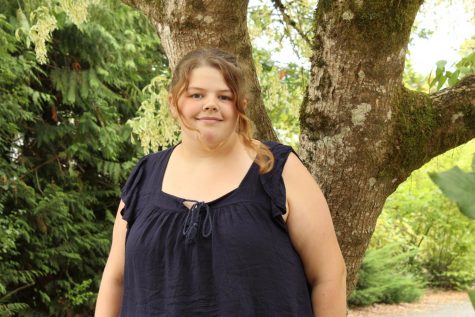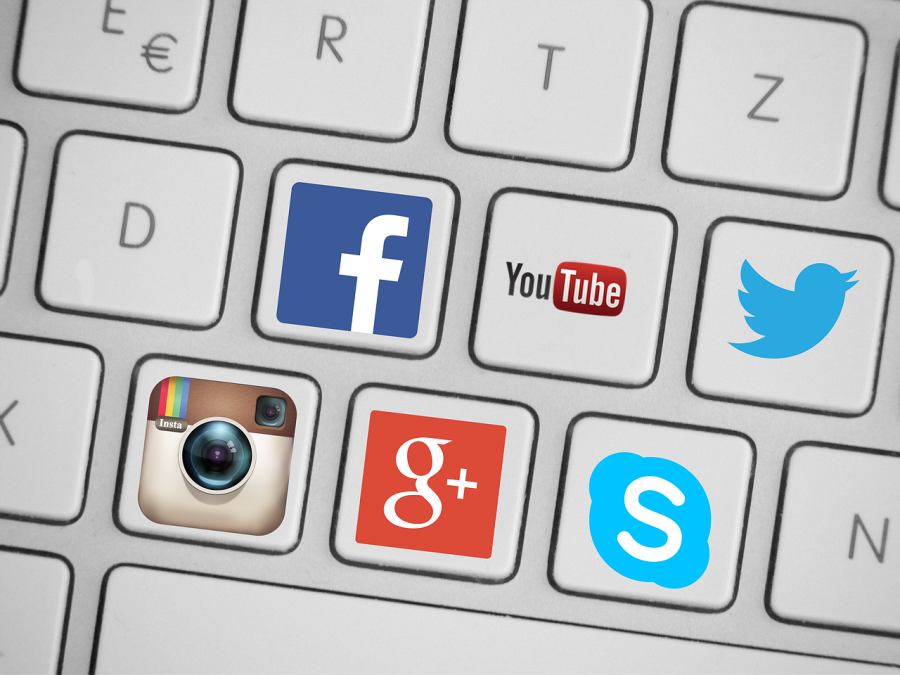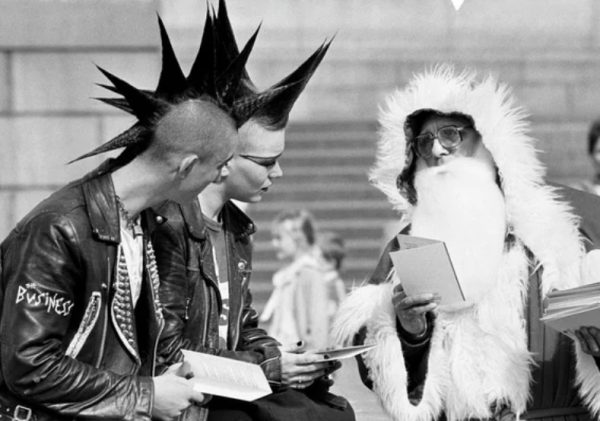The False Picture of Social Media
How social media creates false views about our image
Social media is right under your fingertips and with its increased accessibility comes an epidemic of negative body images
When it comes to social media it can range from being a very helpful tool to being a way to hurt others based on what it teaches them. Sophomore Kaylee Williams talks about some of those challenges when it comes to social media.
Williams says, “Some pages encourage body positivity and say that all bodies are perfect, but then you go onto the next page and they are promoting ways to lose weight or things that change the way you look so you’re more ‘beautiful.’ The whole system is biased and encourages so many different things which makes it hard for everyone because the standards are just so unrealistic.”
In a 2015 article from Harvard.edu titled “Advertising’s toxic effect on eating and body image,” author Amy Roeder talks about the difficulties of creating a good body image in the media.
“Models are tall, slim, and light-skinned, and digitally altered to ever-more unrealistic proportions.”
Williams talks about how that same idea can be shown through social media.
“I use Instagram and TikTok which are some of the main social media [platforms] most teens use. In these two areas, you scroll from post to post and video to video and the topics are never the same.” Williams says, “The world puts so much pressure on teenagers especially when it comes to their health and looks. I’ll be watching a video thinking ‘wow they are beautiful,’ while the comments are saying otherwise. I think so many people have grown up believing things like [that] you have to be skinny to be beautiful and I think that’s a standard that’s incredibly unrealistic.”
However, as Williams shows, beauty can be shown in the different appearances we see.
“God designed every single person differently because his plans for us are all different. He made certain women have larger hips for bearing children for example. Just because the standard is skinny is beautiful it doesn’t mean skinny is healthy,” Williams said. “Some people are built larger but that doesn’t mean they are fat, but that they were just designed for a different purpose. They are perfect because God designed them but social media always overlooks what should be the only beauty standard. Every body is beautiful because it was given purpose from God.”
While it can be hard to focus through all of the false views the world brings, we can try to move forward with it, choosing to change that view.
“Our world is filled with judgment. I feel we need to focus less on looks and more on who a person is on the inside because overall looks won’t hurt you, but the way you treat someone can. Our standards are so unrealistic because we should focus more on health not looks. Your body is just a temple to the real you. Your body carries your mind and soul which are what make you, you. People don’t realize that we get one life in our bodies but can have eternity because of our souls. The world is just unrealistically judgmental and it needs to change.”
Even though the view that social media and the overall media portrays is a big step before change can come, there is more to be done in such as how it affects others.
“Some people ignore the standards and just know the truth, which is that they are perfect, but a majority of people are affected negatively. I’ve seen so many videos that have been made about women feeling the pressures of their society telling them how to look. They are depressed and wished they were someone else when they are really perfect as is. I’ve seen friends cry and talk about how they wish they looked more [a certain way] and it always makes me mad because they don’t see what I see and I always think they are the most beautiful and precious things to this world.”
However, despite all these issues, there are some positives that can be found.
“I’ve personally watched groups of people connect over things like their religion or [about health] or just things that their peers wouldn’t understand, but the groups do. They can bring a lot of encouragement and confidence to people.” Williams says, “Social media has also sparked huge movements for bettering our world which has been a super huge part to the positive effects of social media.”
YC counselor Quinn Takashima talks about the overall effects she has seen through social media.
“Social media has affected teenagers in so many ways. There are some really great things that can come out of social media, however, I have seen that the majority of social media influence has been negative. Girls and boys try to live up to the standard that they see influencers on social media uphold.” Takashima explains, “Many of these standards are unrealistic and can be very dangerous to young boys and girls. Social media also never shuts off. Teens nowadays can never unplug themselves from the influences that social media has on them. There are always ads, commercials, and pictures.”
While we may hope that the positives can break through to people, the trouble of comparison still can hit hard, which is why it is so important for those who can, to make that difference. Williams talks about that change.
”I’ve compared myself to people more than I should have. It’s made me insecure and wish I looked different. It’s been a really bad thing for me because I’m dumb enough to believe the beauty standards.” Williams continues, “I think that right now some platforms are already trying to change the beauty standard. Tiktok has brought huge body positivity movements however not everyone was taught what’s being encouraged in those movements. Because of the standards people have believed for years, it’s made the more realistic standards more unrealistic to them.”
Takashima explains why some students feel they do not measure up to the standard portrayed online.
“Girls and boys feel like they need to hold themselves to such high standards. For example, have the nicest body, have the coolest, hippest, trendy clothes, [and] portray that they are loved by many. Likes, retweets, [and] views also can have an extremely negative influence on kids because they find their own personal value in how many likes they have on a picture or video. Kids also think everyone’s lives are perfect because influencers only portray that. So when kids think everyone else’s lives are perfect, they can get down about the challenges in their lives.”
When teens begin to scroll through social media on their mobile devices, many pictures can influence them, as Takashima has explained, but there are also things that need to be done to improve the negativity through social media.
“When they see a certain influencer get thousands of likes on a picture, they try their best to be like them so they can be liked and popular! Kids are so worried about their physical appearance. When kids see beautiful bodies on their feed, it is hard for them not to think about the editing done on the picture and what the person looks like realistically. Perfection is perceived and causes a lot of stress,” Takashima said. “It is going to be super important that social media influencers start to become better influences on our kids. I have seen a small shift in some pictures and videos showing what an edited photo looks like and what they look like in real life. I have seen more influencers talk about the pressure of society and if we can keep on this trend, it will help our youth understand to love themselves and to be themselves and not compare to others.”
Takashima talks about some of the worst things that can come from social media overall.
“Eating disorders, anxiety, depression, and stress disorders can have a direct correlation to social media influence. When kids are so caught up in how they should look or act to be liked and loved, it can lead to extreme measures and serious mental health/physical health issues. This is extremely scary because like stated earlier, the internet and social media never shuts off. Kids have access to it 24/7.”
However, it is also important to remember that there are resources available too. Students can visit teenlineonline.org for support from trained teens.
Takashima talks about how it is important to move forward, despite the challenges and impact social media has left students with.
“It is going to be super important that social media influencers start to become better influences on our kids. I have seen a small shift in some pictures and videos showing what an edited photo looks like and what they look like in real life. I have seen more influencers talk about the pressure of society and if we can keep on this trend, it will help our youth understand to love themselves and to be themselves and not compare to others.”

My name is Lajla Raske and I am a 2021 Senior. This is my second year on the YC staff. I have one year of experience, prior to being on the YC staff, where...






